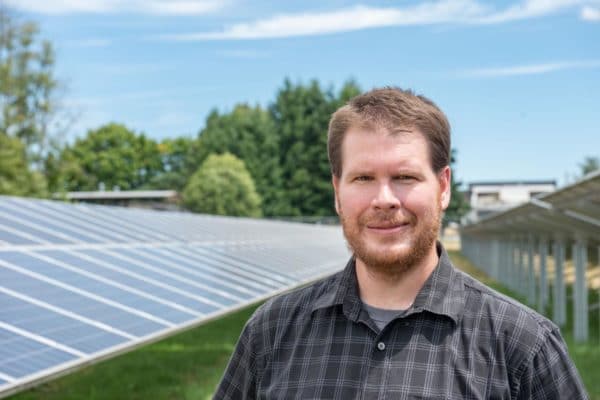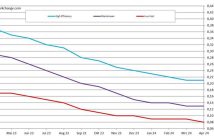- Using land for both solar photovoltaic power and agriculture could provide 20% of total electricity generation in the United States, according to a new paper by Oregon State University researchers.
- Wide-scale installations of agrivoltaic systems could lead to an annual reduction of 330,000 tons of carbon dioxide emissions in the United States, while “minimally” affecting crop yields, the researchers said.
Agrivoltaics provide a “rare chance for true synergy: more food, more energy, lower water demand, lower carbon emissions, and more prosperous rural communities,” said Chad Higgins, an associate professor in Oregon State’s College of Agricultural Sciences and the senior author of the paper, which was recently published in Sustainability.
The paper finds that an area about the size of Maryland would be needed if agrivoltaics were to meet 20% of U.S. electricity generation. That’s about 13,000 square miles, or 1% of current U.S. farmland.
The cost of the agrivoltaic arrays would be $1.12 trillion over a 35-year project life. The researchers said they believe that the private sector would cover most of the construction costs, with the federal government contributing rebates and other incentives. Using money generated from the PV arrays, it would take about 17 years to pay back the $1.12 trillion, the researchers estimate. After the projected 35-year project lifespan, the arrays would produce $35.7 billion in annual revenue.
Adoption barriers
The research is not the first in the field. Research led by the University of Arizona’s Greg Barron-Gafford, and published in Nature Sustainability in September 2019, found that shading crops with PV panels can provide multiple benefits, including greater food production, reduced plant drought stress, and a drop in solar panel heat stress.
The Arizona team’s results were based on a dryland farming system and suggested that an agrivoltaic system may be a resilient energy and food system. The researchers warned, however, about “probable barriers to wider adoption,” including challenges associated with mechanized farming and harvesting, along with the additional costs of elevating PV arrays to allow for food production.
SolarPower Europe launched a new working group devoted to agrivoltaics in early 2020. The aim of the group is to boost the deployment of agrivoltaics across Europe by shaping the EU’s agricultural and energy policy agendas.
And in October, German solar developer Next2Sun flipped the switch on an agrivoltaic project in the southern German state of Baden-Württemberg. The 4.1 MW solar project spans around 14 hectares. It was built with roughly 11,000 n-type PERT bifacial solar modules, each with 380 W of power, provided by Chinese manufacturer Jolywood. They were vertically installed on 5,800 racks.
Back in Oregon, Higgins said he plans to install a fully functional solar farm designed to prioritize agricultural activities on five acres of Oregon State’s North Willamette Research and Extension Station near Portland. Ground will be broken in May, with production expected to start in 2022.
Higgins said that the wide-scale installation of agrivoltaic systems opens the door for other technologies. For example, surplus energy generated by the solar arrays could be used to power electric tractors or to generate fertilizer on a farm. And low-cost sensors could be installed on the solar panel platforms to support artificial intelligence-based decisions to improve agricultural productivity
Author: David Wagman
This article was originally published in pv magazine USA and is republished with permission.











